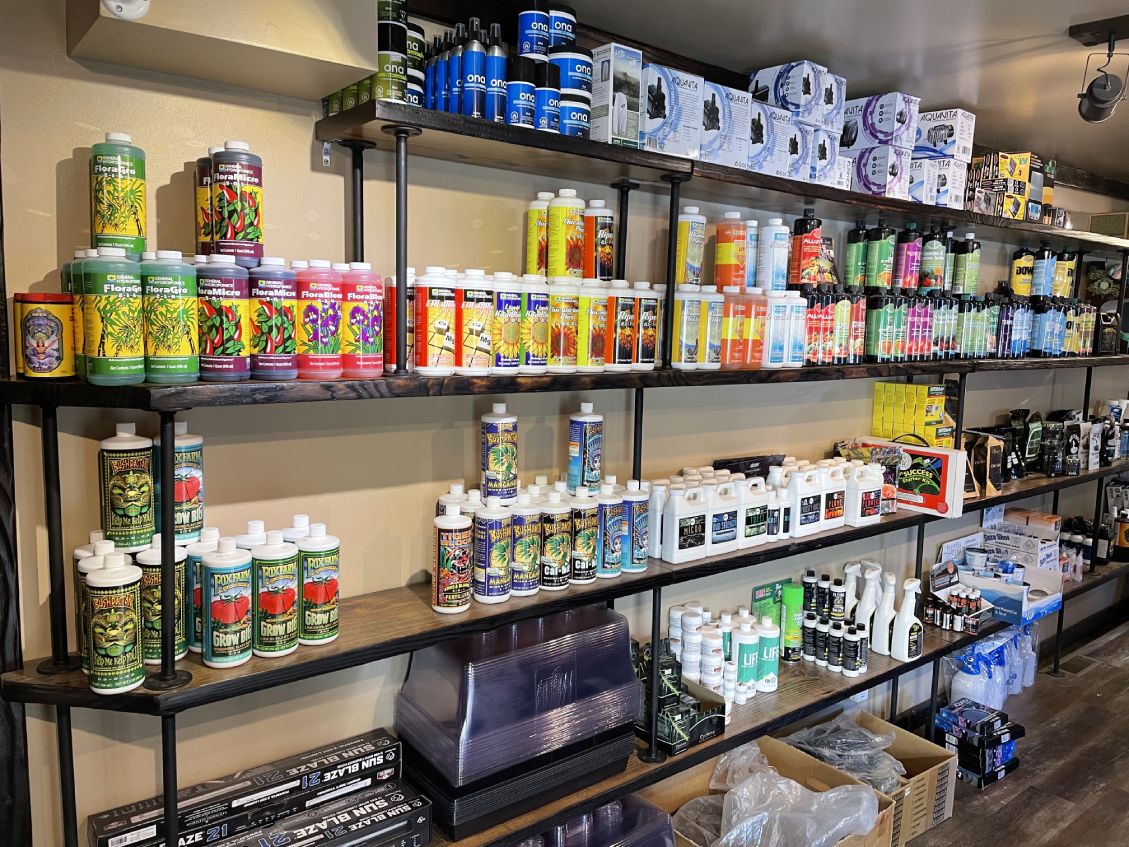The Indoor Earthworm Method: Your Key to Flourishing Plants Through Growing
Wiki Article
Opening the Possible of Hydroponics: Understanding Its Utilizes and Various Kinds
Hydroponics, a technique of cultivating plants without dirt, has gathered enhancing attention for its possible to revolutionize agriculture and gardening techniques. The precision control over nutrient delivery, water usage, and ecological aspects offers a glimpse right into a future where food production can be optimized in numerous settings. As we navigate with the elaborate landscape of hydroponic systems and strategies, it ends up being obvious that each method holds distinct benefits and constraints. By unraveling the varied uses and kinds of hydroponics, we can discover a globe of possibilities that might improve just how we picture sustainable farming and gardening techniques.Benefits of Hydroponic Solutions

One more advantage of hydroponic systems is the capacity to grow plants in a smaller room. Hydroponic systems minimize the risk of soil-borne conditions and bugs, as there is no soil to harbor these hazards.
Typical Utilizes in Agriculture

Provided the effective water preservation and space-saving advantages of hydroponic systems, it is noticeable that these cutting-edge farming methods have found typical uses in different markets of farming. In standard farming, soil-based farming can be land-consuming and labor-intensive. Hydroponics offers a service by enabling plants to be expanded without dirt, lowering water use by approximately 90% contrasted to standard farming methods. This makes hydroponics particularly suitable for areas facing water scarcity or limited cultivable land. In addition, the regulated atmosphere of hydroponic systems enables year-round farming, giving a regular supply of fresh fruit and vegetables despite external climate condition.
Hydroponics is generally used for expanding a variety of crops, including leafed environment-friendlies, tomatoes, cucumbers, peppers, strawberries, and herbs. Its convenience includes vertical farming, metropolitan farming, and greenhouse production. Furthermore, hydroponic systems are utilized in research study and instructional settings to examine plant development, cultivation, and nourishment techniques. The versatility and performance of hydroponics make it a valuable tool in modern-day farming, addressing the difficulties of sustainability, food protection, and source optimization.
Checking Out Different Hydroponic Techniques
What are the various ingenious methods used in hydroponics to improve crop cultivation efficiency and generate? Hydroponic systems offer a series of approaches that provide to different plant kinds and cultivation goals. One prominent technique is the Deep Water Culture (DWC) system, where plant roots are submerged in a nutrient service, supplying adequate oxygen and nutrients. An additional widely utilized method is the Nutrient Film Technique (NFT), which includes a superficial stream of nutrient remedy flowing over the plant origins, promoting water and nutrient uptake. In addition, the Ups and downs system, likewise referred to as the Flood and Drainpipe system, intermittently floods the plant origins with nutrient option, allowing for oxygenation throughout draining pipes periods. Aeroponics is an additional sophisticated strategy that includes misting plant roots with a nutrient remedy, making best use of oxygen absorption and nutrient uptake. Each of these methods showcases the flexibility and performance of hydroponic systems in improving crop development and yield.Contrasting Various Hydroponic Solutions
Discovering the effectiveness and return improvement methods in hydroponics leads us to contrast various hydroponic systems offered for plant farming. Each hydroponic system has its distinct attributes, benefits, and limitations, making it critical for growers to choose one of the most suitable system based on their certain demands and constraints.One of the most common hydroponic systems is the nutrient film method (NFT), where a slim movie of nutrient solution continuously flows over the plant roots. In contrast, the deep water culture (DWC) system submerges plant origins straight right into the nutrient solution, providing Full Article sufficient oxygen and nutrients.
One more preferred hydroponic system is the ebb and circulation (or flooding and drain) system, which regularly floods the plant roots with nutrient service before draining it. This cyclic process guarantees proper aeration for the origins while supplying nutrients successfully. Furthermore, the aeroponic system puts on hold plant origins airborne and hazes them with a nutrient option, promoting rapid development and high oxygenation degrees. Farmers seeking a functional system that lessens water usage typically choose for aeroponics. By understanding the distinctions in between these hydroponic systems, growers can make informed choices to make the most of plant return and quality.
Technologies in Hydroponic Innovation
One crucial technology is the development of smart hydroponic systems that use sensing units and automation to check and readjust environmental conditions such as pH levels, nutrient concentrations, and light exposure in real-time. These systems allow specific control over expanding browse this site problems, leading to optimal plant growth and higher crop yields.Another noteworthy improvement is the combination of upright farming strategies with hydroponic systems, permitting for the farming of plants in piled layers. This upright strategy makes the most of area usage, making it suitable for metropolitan atmospheres where land accessibility is limited - The Indoor Earthworm. Furthermore, using advanced LED lighting systems tailored to details plant needs has actually boosted energy effectiveness and enhanced growth prices in hydroponic arrangements
Innovations like these are driving the advancement of hydroponics, making it a very appealing and sustainable alternative for contemporary agriculture.
Verdict
In final thought, hydroponics provides countless advantages in agriculture and has numerous methods and systems that can be utilized to optimize its capacity. Innovations in hydroponic modern technology continue to boost effectiveness and sustainability in food manufacturing. By comprehending the uses and various kinds of hydroponic systems, growers and farmers can open the full potential of this innovative method of expanding plants without soil.Additionally, hydroponic systems enable for far better control over nutrient levels, pH equilibrium, and environmental problems, leading to healthier plants and higher returns.

Report this wiki page